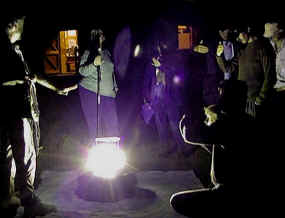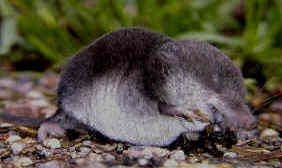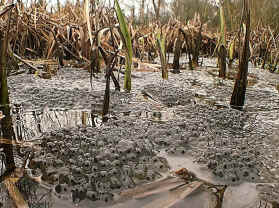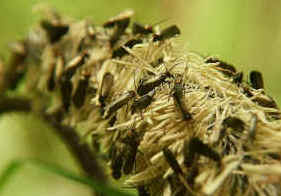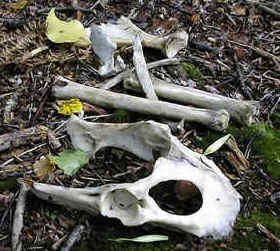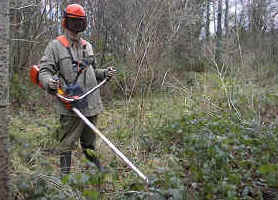Discover The
Countryside !
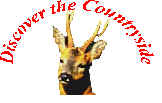
The Fascinating World Around Us -
An Introduction to British Wildlife and Habitats, for
12 - 16 year olds.
LIST OF ACTIVITIES - CONTINUED
Activity |
Outline |
||
|
Get an
entirely different perspective on the countryside and view it as few people see it. Visit
the Centre at night when the atmosphere changes completely. Nothing looks the same in the
dark. Creatures that we are often totally unaware even exist, come out of hiding under the
cover of darkness. Put out the moth trap in different habitats and see the difference in the variety of insects drawn to the light. Use a bat detector to track down different kinds of bats. The Centre is an important amphibian breeding site. Visit in March and see hundreds of Toads and search for palmate newts. Badger watch in the summer. These activities will provide innumerable examples of species which can be used to explain a wide range of environmental principles. |
||
|
Everything in life is intricately interconnected. What are the connections?
How do ecosystems work?
Competition between species. Succession. What happens on bare ground? Why do habitats never stay the same? All of these principles will be demonstrated through taking a hands-on practical look at organisms in a variety of habitats. Important terminology will be defined. |
||
|
Water in all its endless fascination. This activity will cover:
These points will be illustrated with a practical look at the Centre's variety of freshwater habitats, including ponds, wetlands and streams. |
||
|
This activity
is designed to illustrate just how complex ecosystems are. It will take a look at some of
the fascinating and often staggeringly complex interactions between species.
|
||
|
Natural recycling: 'Death into life or, 'nothing is
ever wasted'. How is it that an atom of carbon or nitrogen in your muscles may once have
been part of a dinosaur or a trilobite?
These points will be illustrated by practical investigation of a woodland and a freshwater habitat. |
||
|
The Woodland Education Centre is an ideal location for explaining
conservation and management of habitats. There is an enormous range of habitats available
to illustrate the main points. These have been restored from essentially derelict land.
The activity will look at the practicalities of conservation from a real working
perspective.
|
